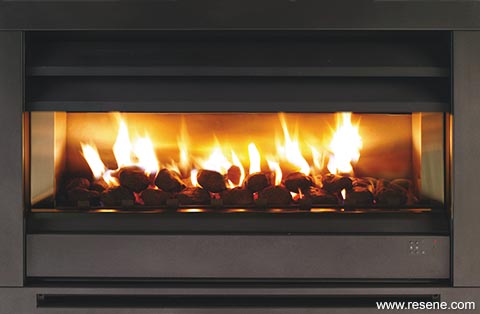From Habitat magazine - issue 04
With such a wide range of home heating options available on the market today, it’s easy to be confused when considering the most energy-efficient way of heating our houses. What criteria should we use when making a decision?

If, like me, you live in a draughty old colonial villa, with sash windows that rattle in the wind and (blush) where ceiling and under-floor insulation are still on the to-do list, you’ll need to install effective heaters. However, if you already live in, or are planning to build, a new home that incorporates passive solar heating and has plenty of insulation lining the ceiling and walls, then turn the page – this story is not for you.
So, assuming that you live in an existing home and you’ve done your best to insulate the ceiling, walls and floor, what’s next? Do you want a short term solution or a long-term one? – you may end up spending more upfront, but less in the long run. Do you want to heat a single room or a whole house? Do you wish to keep some rooms at a lower temperature than others? Do you favour gas or electric heating?
Consult an experienced heating engineer before you start to make sure you’re on the right track. Have the size and complexity of the job detailed in writing and quoted, and make sure that you get a certificate of compliance for electrical work.
This is most appropriately installed when a house is under construction, although retrofitting is possible in some situations. Usually, hot water pipes are installed in the concrete foundation slab, but an alternative is under-tile heating, where electric cables are laid between the existing floor and your ceramic tiles.
A gas, diesel, or electric central heating unit or heat pump can be installed under the floor or outside the house, with warm air ducted to the different rooms.
Modern, fuel-efficient woodburners are a cheap form of heating. They are effective in open-plan houses, but are not so good in older homes with separate rooms. Remember, your wood must be dry.
Features and functions:
These provide background warmth, circulating the warm air by natural convection.
Advantages:
Check:
These use glowing electric elements with reflectors to radiate heat directly onto you.
Advantage:
Disadvantages:
Heating foil is inserted between the framing and the ceiling plasterboard, and a thermostat is buried in the ceiling. This provides quick-acting warmth.
These supply a blast of warm air directly onto you. They are good in a small room, but not for areas you need to heat over long periods of time.
Disadvantages:
Check:
These are convection heaters mounted permanently on a wall. They provide great background heat.
Heat pumps collect heat from the air outside a house and release it inside. Sizes vary from small – capable of heating one room – to models of sufficient size and capacity to heat an open-plan environment.
Advantages:
Disadvantage:
These are permanently installed convection heaters and are ideal for people who are home most of the time. They can spread warmth into several rooms, for lower running costs than oil column heaters, radiant heaters, fan heaters and convection heaters, but they’re not cheap to install.
Your options here include flued or unflued natural gas or LPG. The Consumers’ Institute of New Zealand does not recommend unflued gas heaters. It suggests using a type that is fixed to the wall and where the flame is completely enclosed.

You’ll find lots of information on home heating at Consumer online, as well as a guide for calculating the size of heater you need for the size of your room. Visit: www.consumer.org.nz.
words: Sue Reidy
pictures: Courtesy of Tranz
Search habitat magazine stories
Printed copies of habitat highlights are available from late March 2024 at Resene ColorShops and resellers, while stocks last. You can view back issues of habitat magazine online.
Specifiers:
If you have an idea, project or story that you think would suit habitat, we’d love to hear from you. Please drop us an email with your details and include photos if submitting a project.
Sign up for a DIY card and Save! Australia | New Zealand